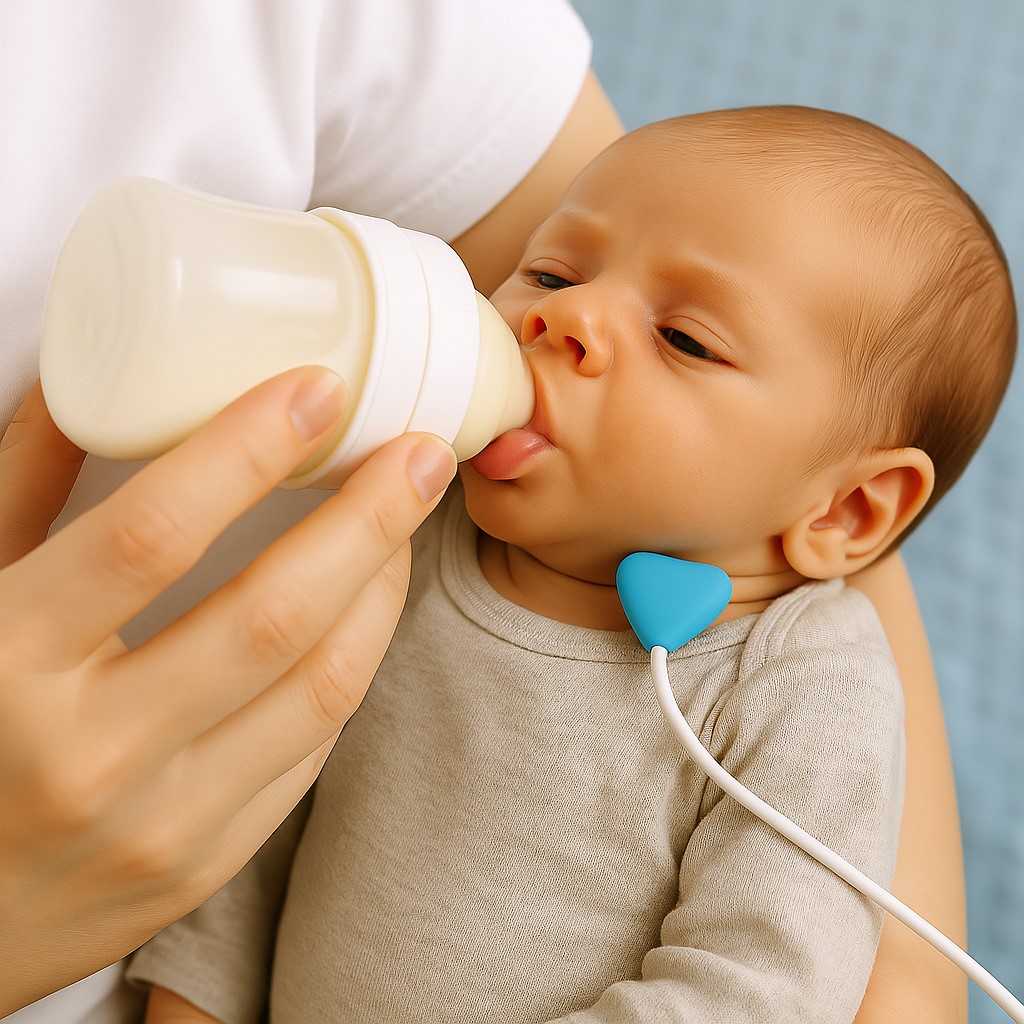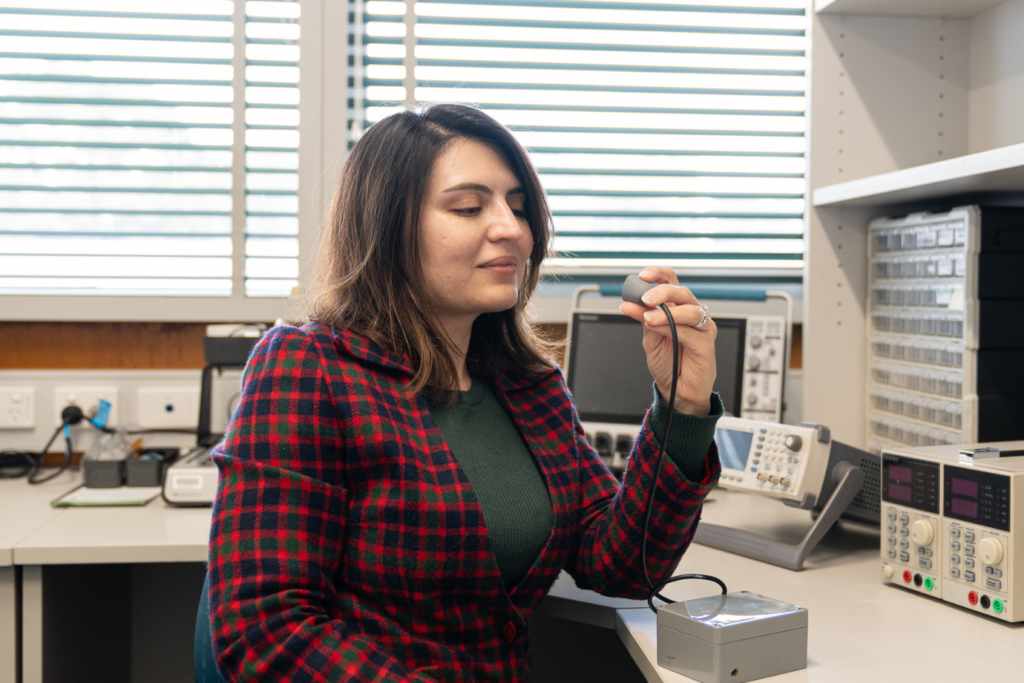A world-first device has been developed to support the countless mums who are breastfeeding but wondering if their baby is getting enough milk.
One of the leading reasons women stop breastfeeding before six months, despite meeting their baby’s needs, is a perceived insufficient milk supply (PIMS). And yet, six months is the minimum amount of time recommended by Australian guidelines.
Now, Monash University engineers have developed a device to accurately track how much breastmilk a baby drinks, in real time.
Head of the Biomedical Signal Processing Research Lab at Monash Dr Fae Marzband and her team at the Faculty of Engineering created the technology to work by placing a small probe on the baby’s neck while feeding. The sensor records signals that use AI to instantly measure the amount of milk the baby consumes per feed.
A working wireless prototype has been developed and is now close to commercialisation.
Inspired by her own experience as a new mum, Dr Marzbanrad says that when she was breastfeeding her “baby wasn’t putting on enough weight, which was a stressful and difficult experience as an overwhelmed new mum”.
“I also found that this was a common experience for other women in my mother’s group. So, I developed a device to solve this problem, and many mums I know are now waiting and willing to pay for it.”

The Infafeed monitor on the device has shown to be successful, as a new pilot of 24 newborns found that the device can track newborn feeding accurately.
“Maternal concern about insufficient milk supply is a major cause of premature cessation of exclusive breastfeeding,” said Dr Marzbanrad.
A large review published in 2021 found that approximately 50 per cent of mothers reported perceived insufficient milk supply as the reason for stopping breastfeeding.
“The Infafeed monitor provides a non-invasive objective tool for assessing neonatal milk intake, with the potential to reduce unnecessary supplementation, enable early identification of feeding problems, and support breastfeeding continuation,” Dr Marzbanrad said.
The monitor was developed in collaboration with Associate Professor Atul Malhotra, a neonatologist from Monash Department of Paediatrics and Monash Children’s Hospital.
Speaking to its potential, Associate Professor Malhotra said: “The technology could be particularly beneficial for preterm or low birth weight babies when they transition from gastric tube feeding to breast or bottle feeding, helping them gain weight more effectively while providing parents with accurate data and peace of mind.”
The researchers believe that, if validated in larger studies, the monitor could enhance breastfeeding support strategies in both clinical and home settings.


